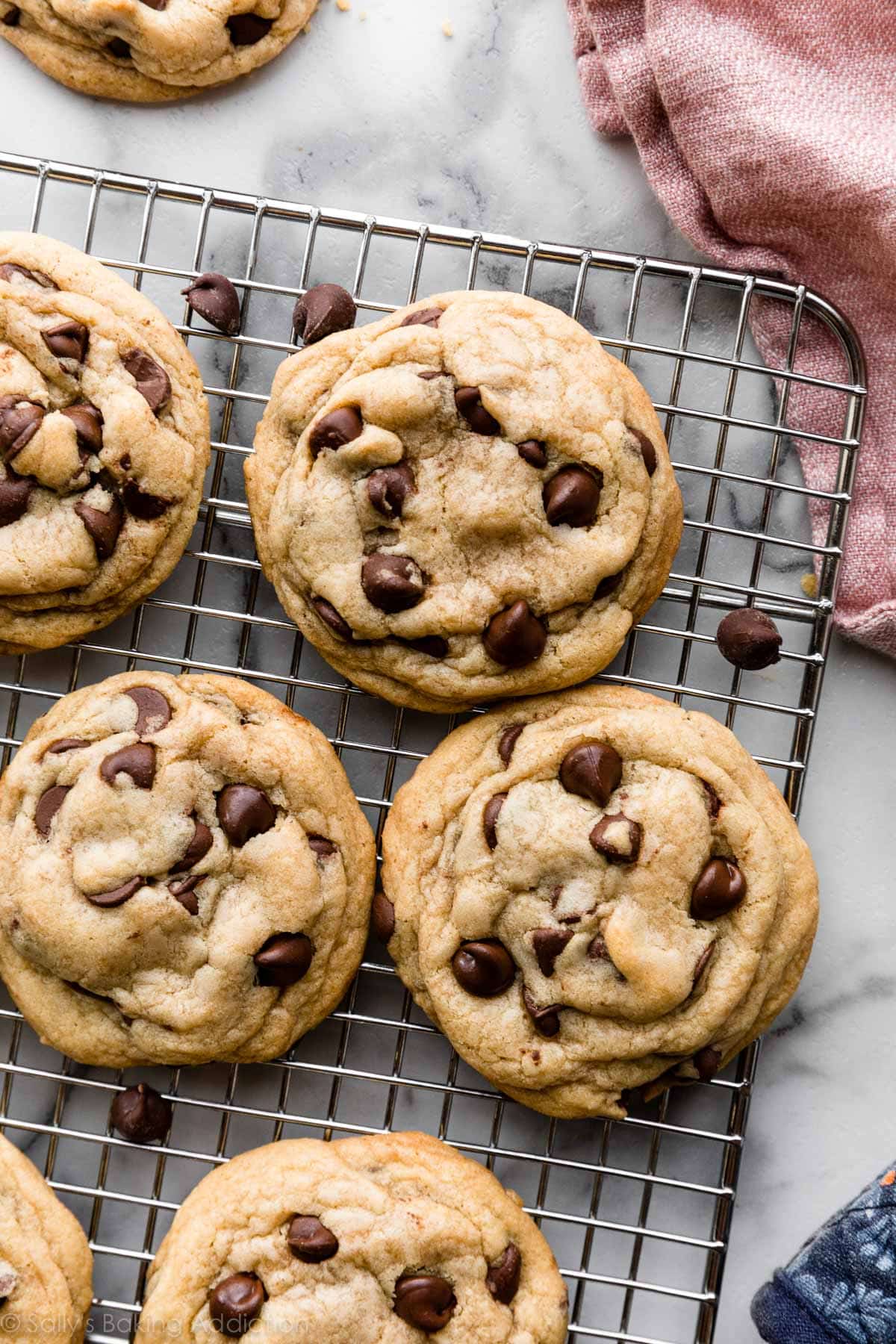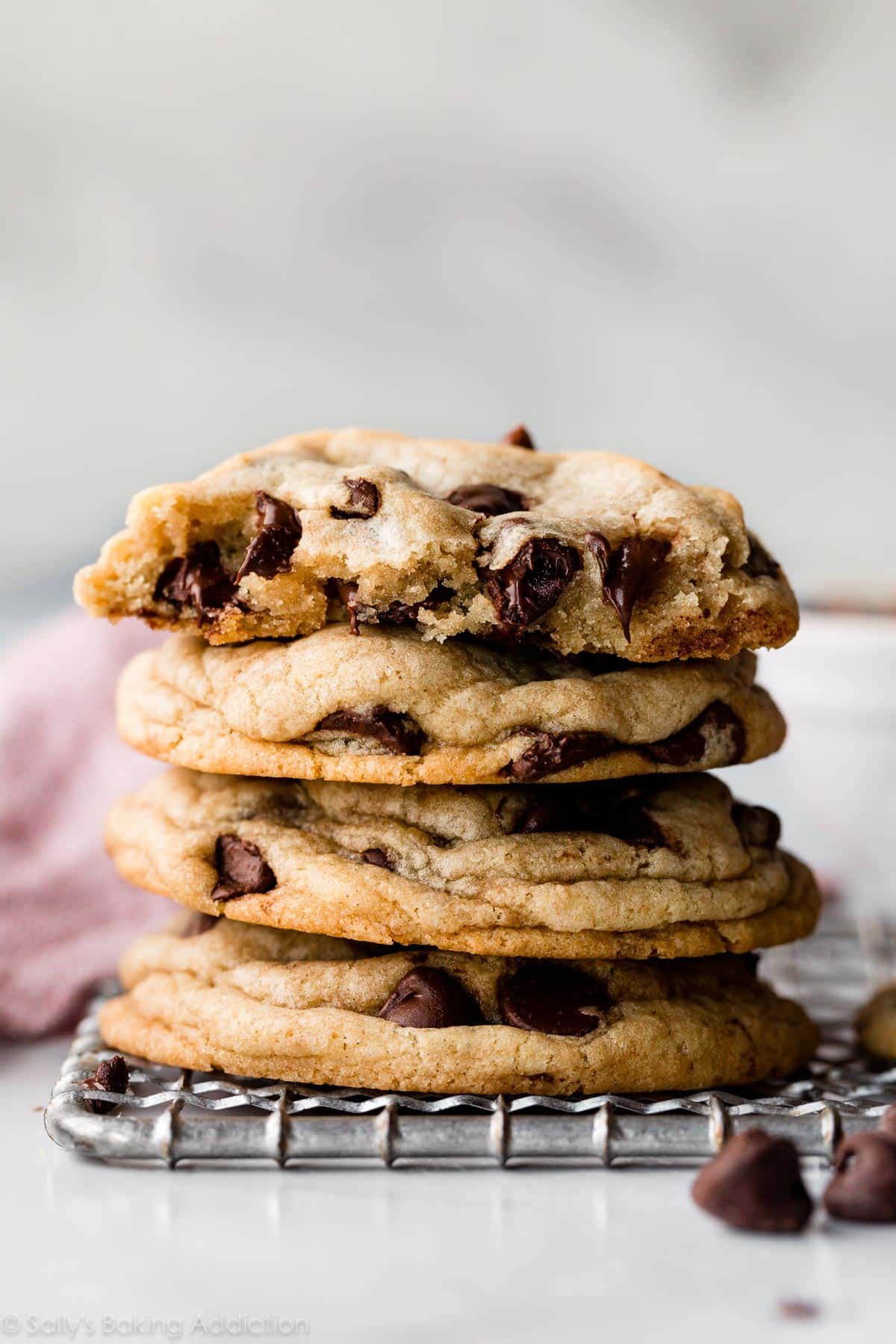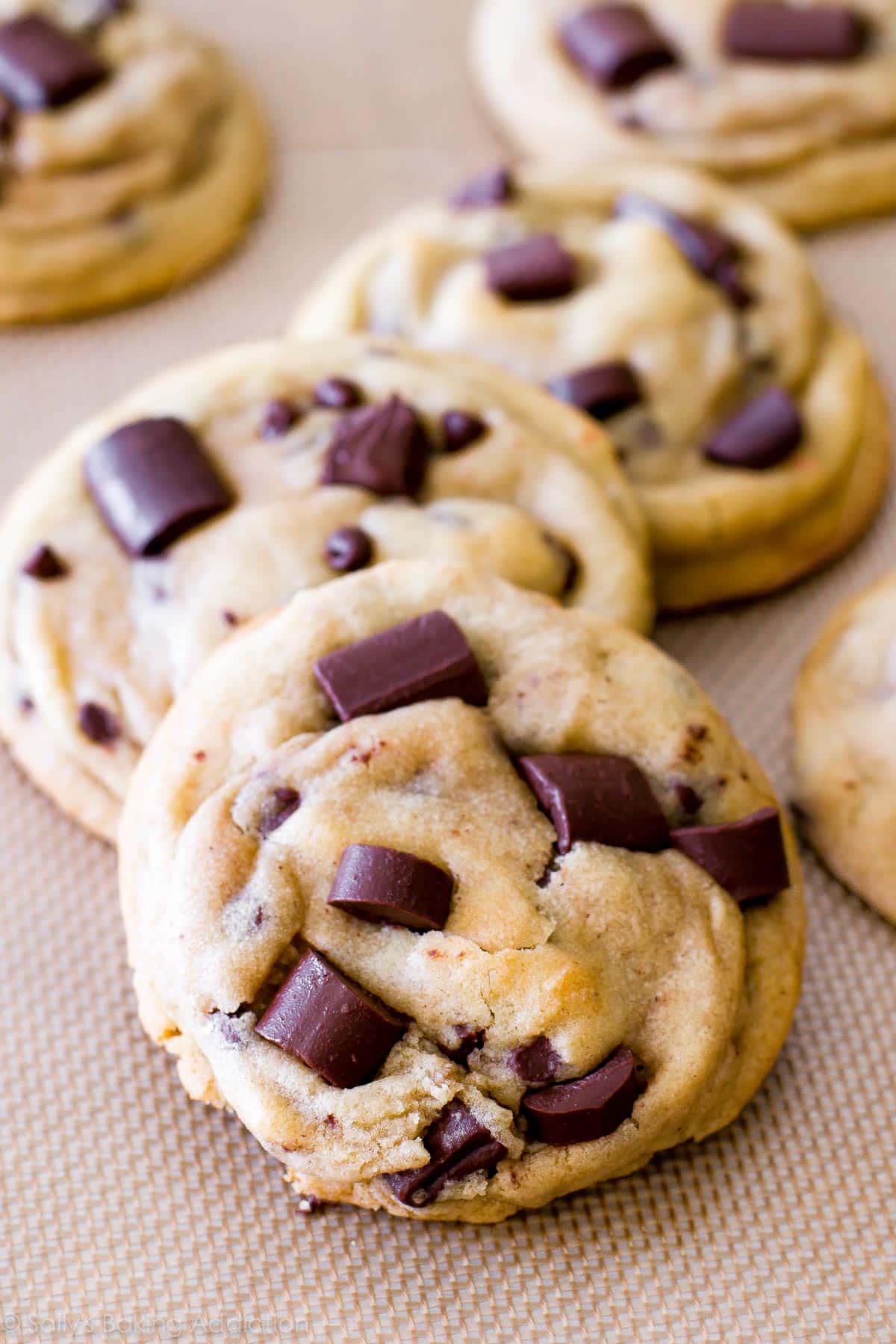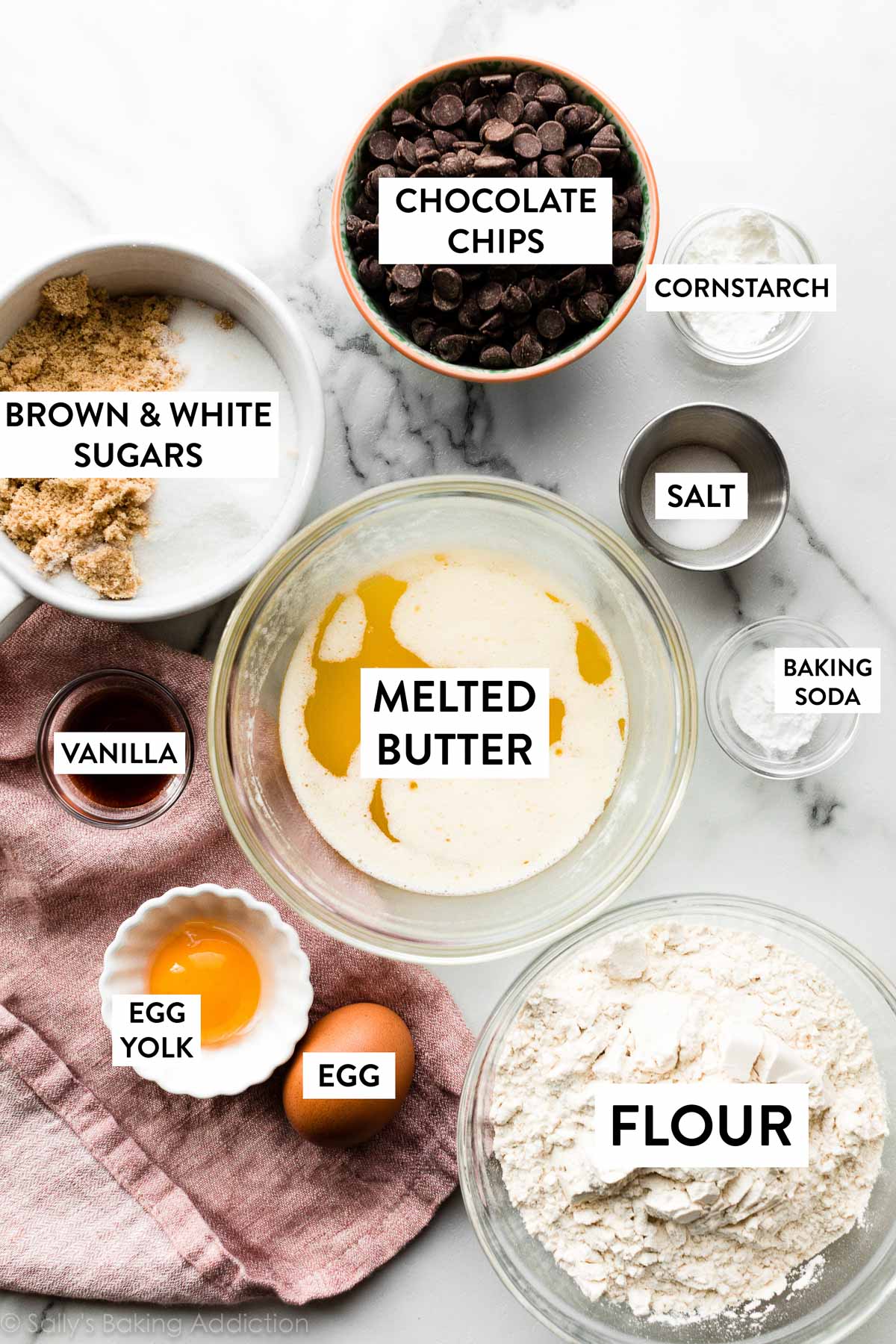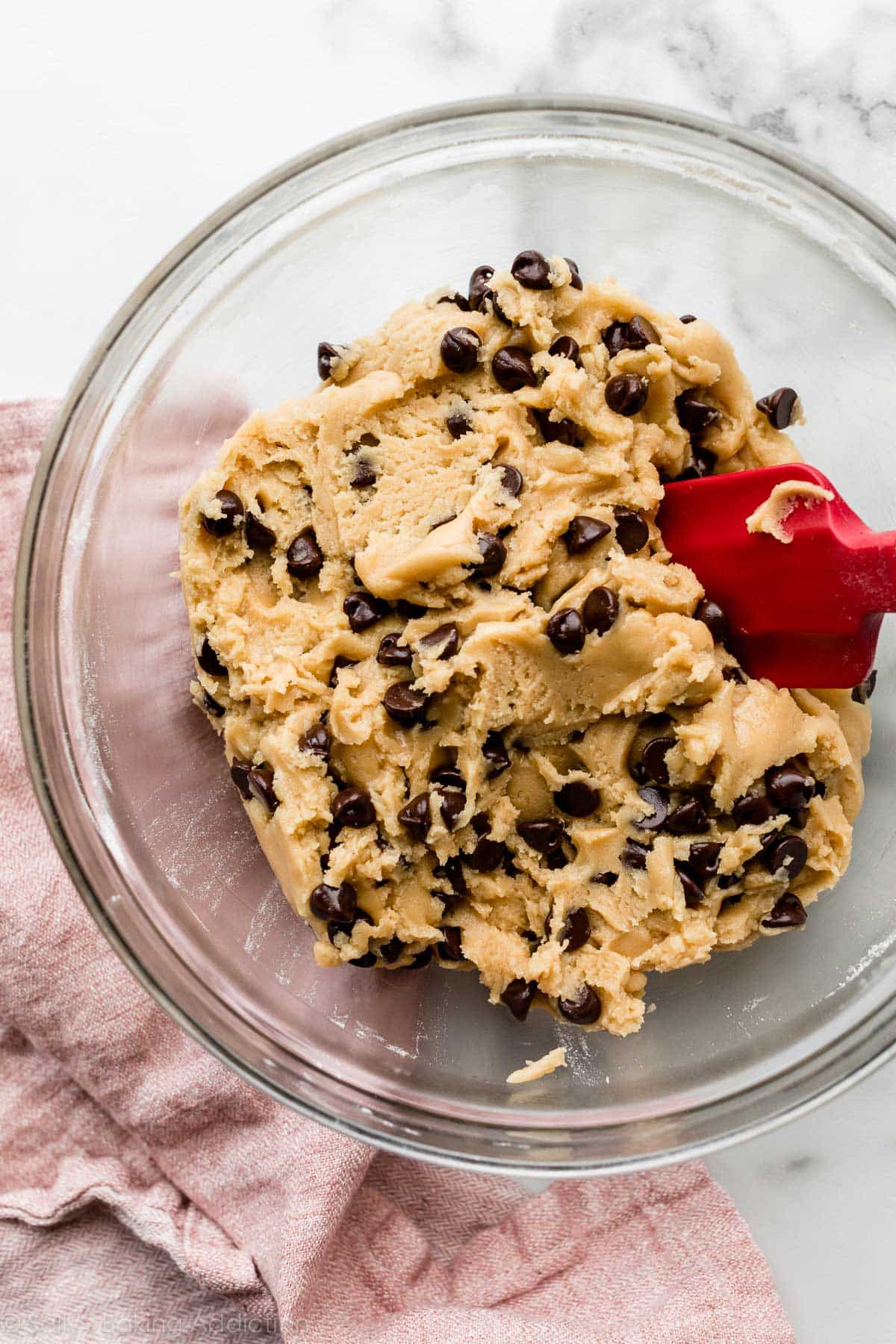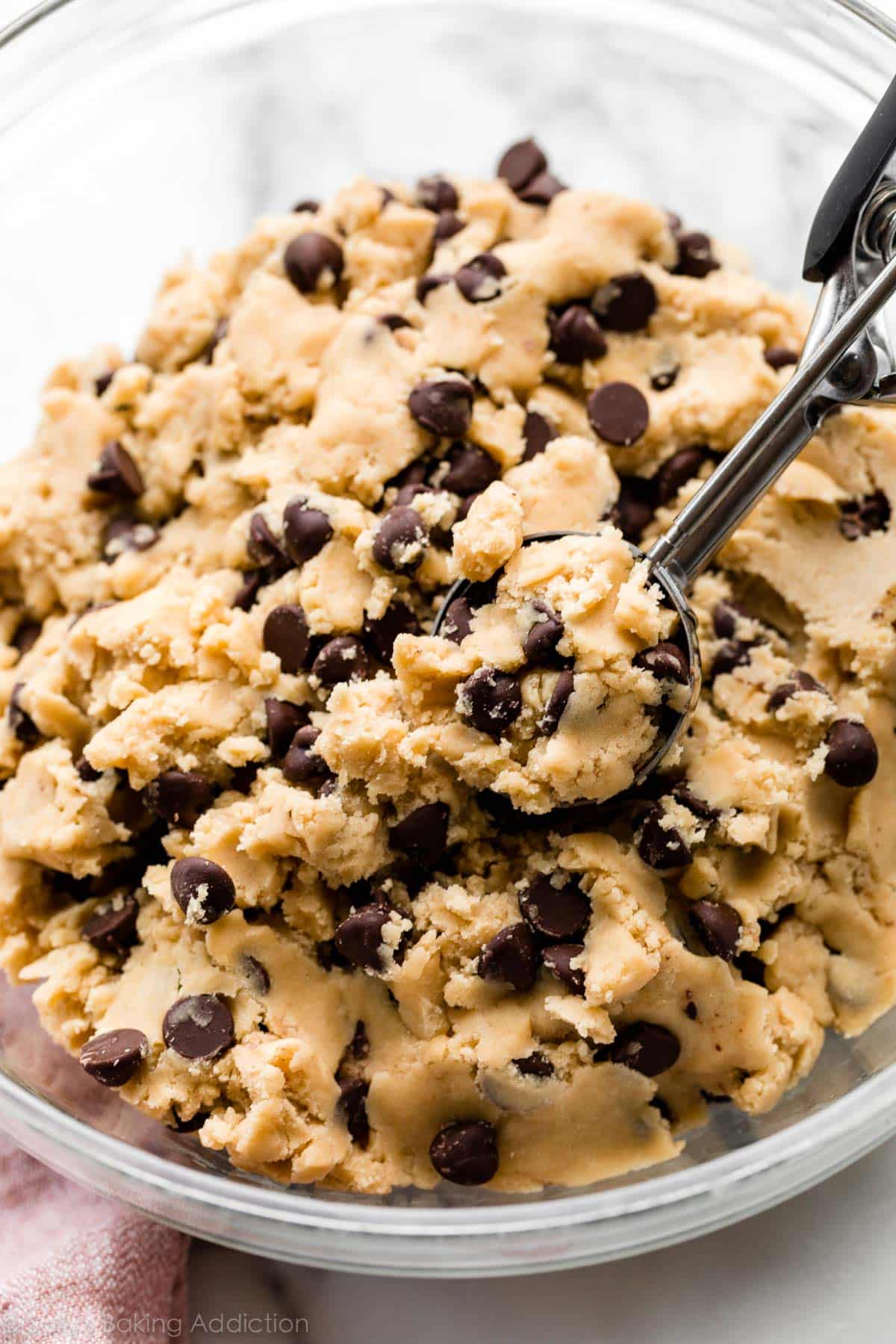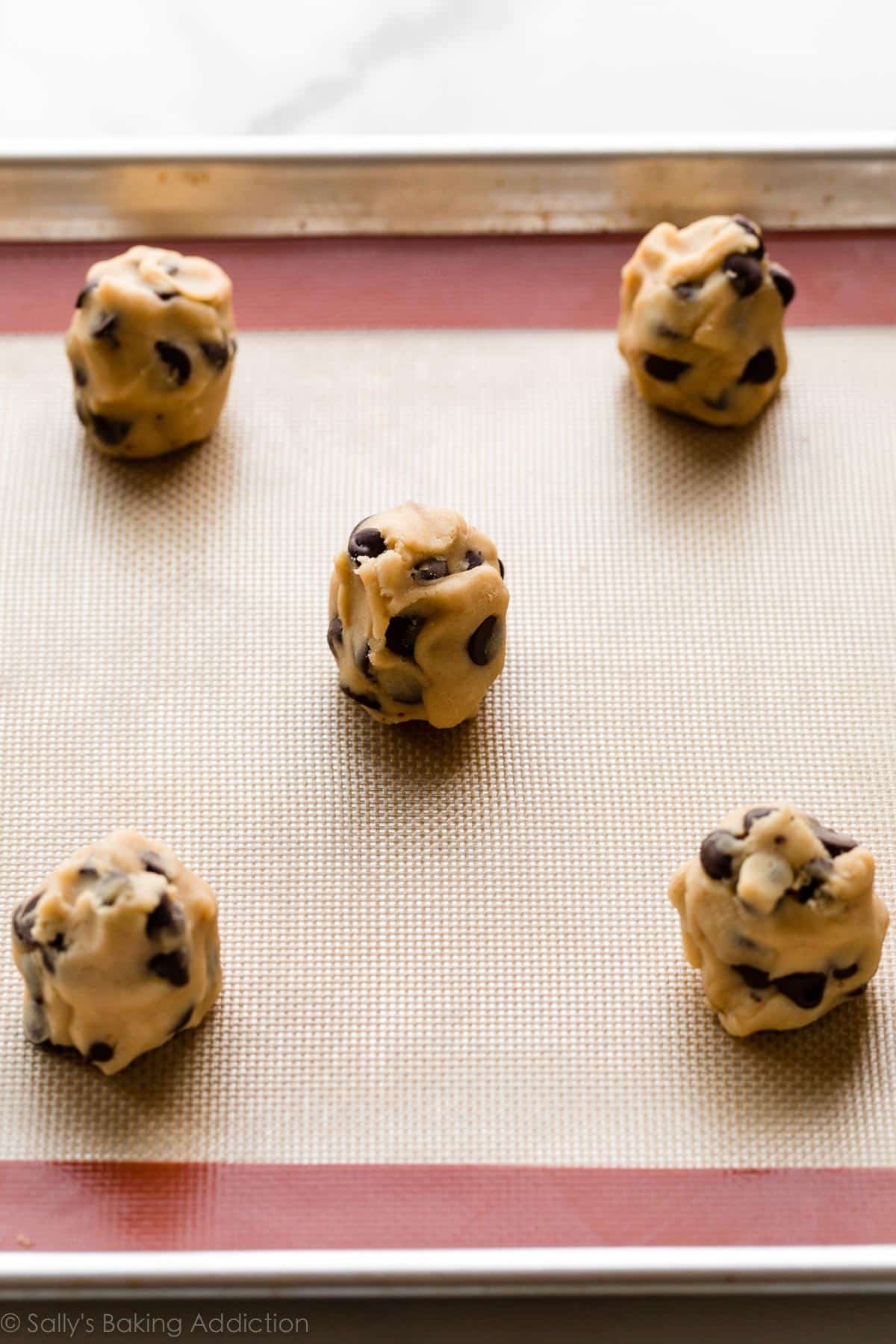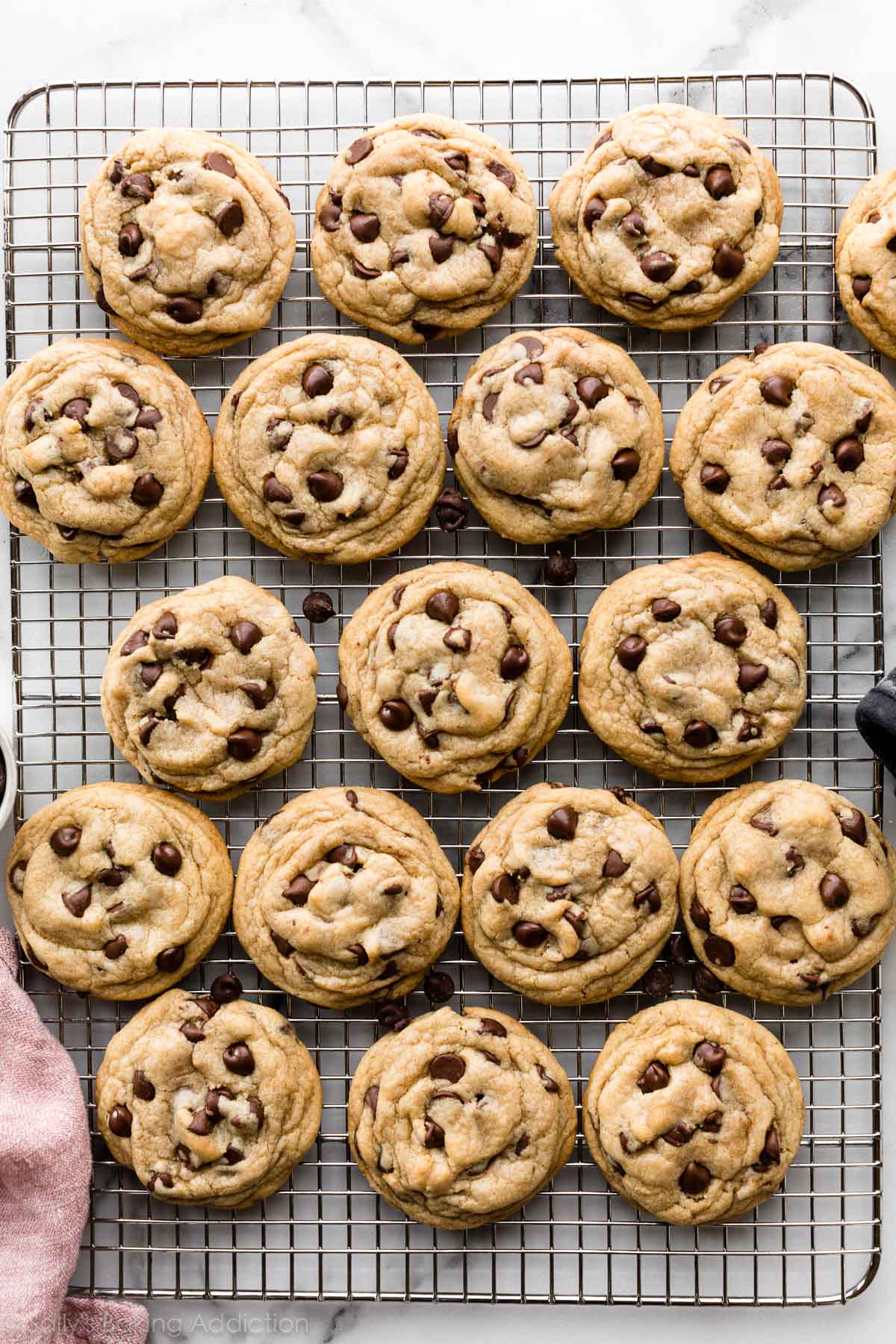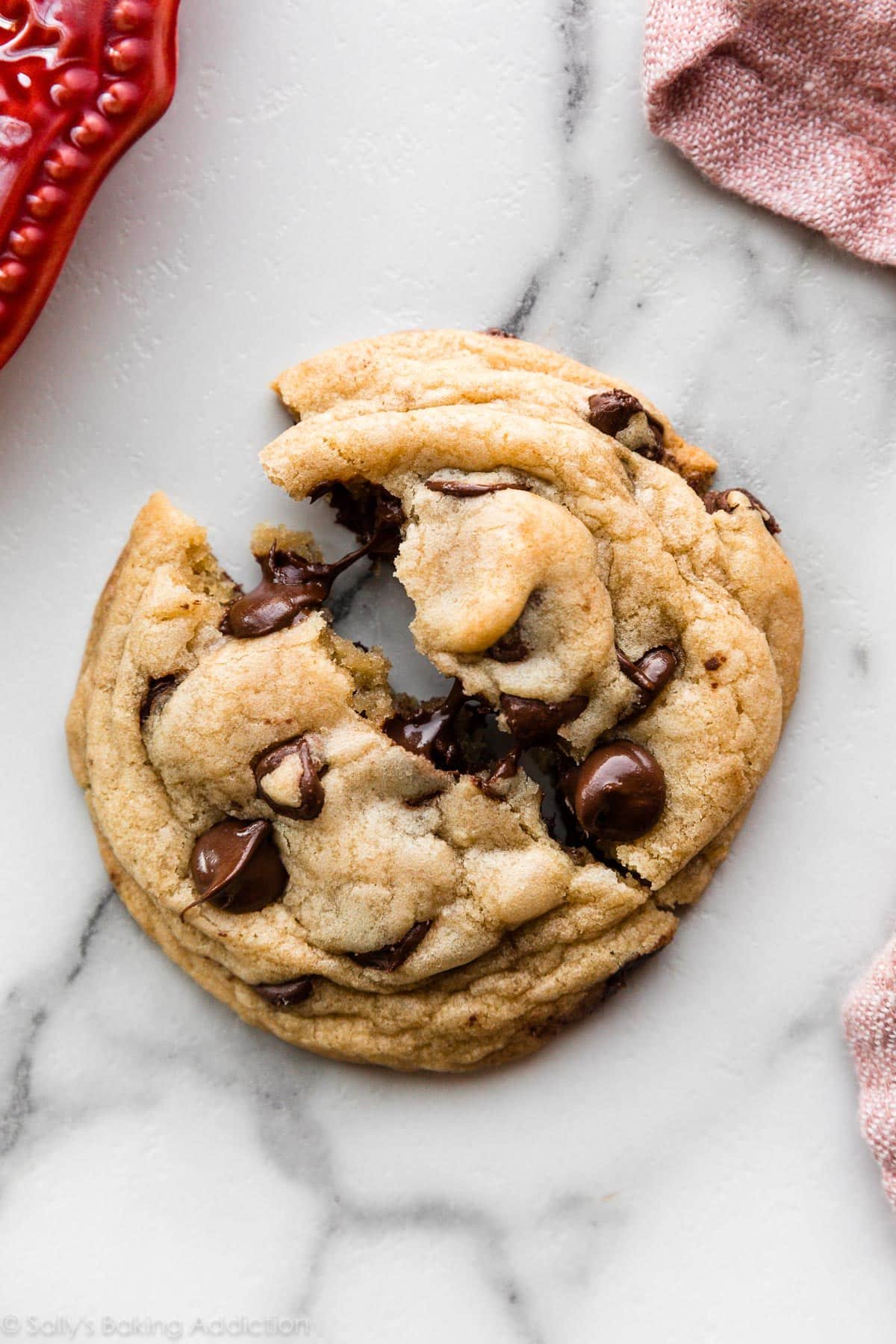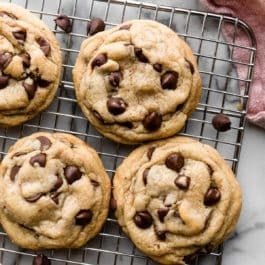There are thousands of chocolate chip cookies recipes out there. Everyone has their favorite and this one is mine. Just a glance at the hundreds of reviews in the comments section tells me that this recipe is a favorite for many others too! In fact, if you asked me which recipe to keep in your apron pocket, my answer would be this one. (In addition to a classic cut-out sugar cookies and flaky pie crust, of course!) Just read the comments on a post in our Facebook group. These cookies are loved… and, warning: they disappear FAST. The recipe is also included in two of my published cookbooks (in Sally’s Baking Addiction, I swap chocolate chips for M&Ms/chocolate chips combo).
Why Are These My BEST Chocolate Chip Cookies?
The chewiest of chewy and the softest of soft. Extra thick just like my favorite peanut butter cookies! Bakery-style BIG. Exploding with chocolate.
Back in 2013, I tested this cookie recipe over and over again to make sure they’re absolutely perfect. I still have a big space in my heart (and stomach) for these Soft Chocolate Chip Cookies. Today’s recipe is similar, but I increased the chewiness factor. You can make them with chocolate chips or chocolate chunks.
Key Ingredients for Chewy Chocolate Chip Cookies
The cookie dough is made from your standard cookie ingredients: flour, leavener, salt, sugar, butter, egg, and vanilla. It’s the ratios and temperature of those ingredients that make this recipe stand out from the rest.
Melted butter: Melted butter produces the chewiest cookies. It can, however, make your baked cookies greasy, so I made sure there is enough flour to counteract that. And using melted butter is also the reason you don’t need a mixer to make these cookies, just like these pumpkin chocolate chip cookies and M&M cookie bars. More brown sugar than white sugar: More brown sugar than white sugar: The moisture in brown sugar promises an extra soft and chewy baked cookie. White granulated sugar is still necessary, though. It’s dry and helps the cookies spread. A little bit of spread is a good thing. Cornstarch: Why? Cornstarch gives the cookies that ultra soft consistency we all love. Plus, it helps keep the cookies beautifully thick. We use the same trick when making shortbread cookies. Egg yolk: Another way to promise a super chewy chocolate chip cookie is to use an extra egg yolk. The extra egg yolk adds richness, soft tenderness, and binds the dough. You will need 1 egg + 1 egg yolk, at room temperature. See the recipe Notes for how to bring your eggs to room temperature quickly.
The dough will be soft and the chocolate chips may not stick because of the melted butter. Just keep stirring it; I promise it will come together. Because of the melted butter and extra egg yolk, the slick dough doesn’t even look like normal cookie dough! Trust the process… The most important step is next.
2 Major Success Tips
- Chill the dough. Chilling the cookie dough is so important in this recipe! Unless you want the cookies to spread into a massive cookie puddle, chilling the dough is mandatory here. It allows the ingredients to settle together after the mixing stage but most importantly: cold dough results in thicker cookies. Cover the cookie dough and chill for at least 2–3 hours and even up to 3–4 days. After chilling, the dough is quite solid, so let it sit at room temperature for 10 minutes (to soften it up slightly) before shaping. (No time to chill? Make these soft & chewy chocolate chip cookie bars instead!)
Further reading: How to Prevent Cookies from Spreading
- Roll the cookie dough balls extra tall. After the dough has chilled, scoop out a ball of dough that’s 3 Tablespoons for XL cookies or about 2 heaping Tablespoons (1.75 ounces or 50g) for medium/large cookies. I usually use this medium cookie scoop and make it a heaping scoop. But making the cookie dough balls tall and textured, rather than wide and smooth, is my tried-and-true trick that results in thick and textured-looking cookies. We’re talking thick bakery-style cookies with wrinkly, textured tops. Your cookie dough should look less like balls and more like, well, lumpy columns, LOL. Watch the video below to see how I shape them. I also demonstrate how I use a spoon to reshape them during baking if I see they’re spreading too much. Another Success Tip: When you remove the cookie dough from the refrigerator, the dough may be slightly crumbly. Scooping and then shaping it with warm hands keeps it intact.
Tools I Recommend for This Recipe
I’ve tested many baking tools and these are the exact products I use, trust, and recommend to readers. You’ll need most of these tools when making sugar cookies and snickerdoodles, too!
Baking Sheets Silicone Baking Mats or Parchment Sheets Medium Cookie Scoop Cooling Racks See More: Best Cookie Baking Tools and 8 Best Baking Pans
Can I Freeze This Cookie Dough?
Yes, absolutely. After chilling, sometimes I roll the cookie dough into balls and freeze them in a large zipped-top bag. Then I bake them straight from the freezer, keeping them in the oven for an extra minute. This way you can bake just a couple of cookies whenever the craving hits. (The chewy chocolate chip cookie craving is a hard one to ignore.) If you’re curious about freezing cookie dough, here’s my How to Freeze Cookie Dough page.
In Short, Here Are the Secrets to Soft & Chewy Chocolate Chip Cookies:
Cornstarch helps product soft and thick cookies. Using more brown sugar than white sugar results in a moister, softer cookie. An extra egg yolk increases chewiness. Rolling the cookie dough balls to be tall and lumpy instead of wide and smooth gives the cookies a bakery-style textured thickness. It’s a trick we use for cake batter chocolate chip cookies, too. Using melted butter (and slightly more flour to counteract the liquid) increases chewiness. Chilling the dough results in a thicker cookie. Almost as thick as peanut butter oatmeal chocolate chip cookies, or their gluten free counterparts, flourless peanut butter oatmeal cookies 🙂
Q: Have you baked a batch before?
